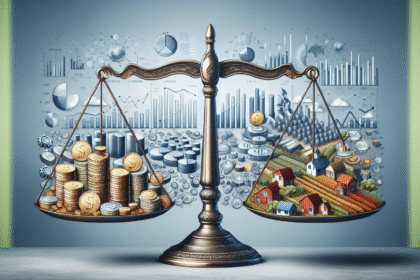The intersection of technology and business strategies represents a dynamic arena where innovation and strategic planning coalesce to drive organizational growth and competitiveness. In today’s digital age, businesses leverage advanced technologies to refine their approaches, improve operational efficiencies, enhance customer satisfaction, and adapt to the rapidly changing market landscape. This article explores various aspects of this intersection, highlighting how technology informs business strategies and the implications for future growth.
1. Understanding Technology Integration in Business
Technology integration refers to the process of incorporating modern technologies into existing business operations. This can include everything from software solutions to AI-driven analytics and cloud computing services. The integration allows companies to streamline operations, automate processes, and utilize data more effectively.
1.1 Automation and Efficiency
Automation technologies, such as Robotic Process Automation (RPA) and AI, help businesses reduce manual labor, minimize errors, and cut costs. For instance, automating the payroll process can save companies significant time and resources, allowing human resources teams to focus on strategic initiatives rather than administrative tasks.
1.2 Data-Driven Decision Making
With the advent of big data analytics, organizations now have the capability to collect and analyze vast amounts of data. This data can provide insights into customer behavior, market trends, and operational inefficiencies. Businesses that harness these insights can make informed decisions that align with their strategies and objectives.
2. The Role of Cloud Computing in Business Strategy
Cloud computing has transformed how organizations store and manage data. This technology provides scalable resources and innovative capabilities that can be tailored to meet specific business needs.
2.1 Cost Reduction and Scalability
Cloud services eliminate the need for extensive on-premise hardware, offering a subscription-based model that reduces upfront costs. Businesses can scale their resources up or down based on demand, ensuring they only pay for what they use, which directly supports agile business practices.
2.2 Enhanced Collaboration
Cloud platforms enable seamless collaboration across teams and geographies. With tools such as Google Workspace and Microsoft 365, employees can work together on projects in real-time, share documents instantly, and communicate efficiently, regardless of their location.
3. The Impact of Artificial Intelligence on Business Strategy
Artificial Intelligence (AI) has emerged as a game-changer in various industries. From enhancing customer service to optimizing supply chains, AI applications are designed to improve efficiency and personalization.
3.1 Personalized Customer Experiences
AI algorithms analyze customer data to understand preferences and behaviors. This information allows businesses to deliver personalized marketing messages, product recommendations, and customer support. A personalized experience increases customer loyalty and drives higher conversion rates.
3.2 Predictive Analytics and Forecasting
AI-powered predictive analytics tools enable businesses to forecast trends and customer demand more accurately. This insight can significantly impact inventory management, marketing strategies, and financial planning, allowing organizations to make proactive rather than reactive decisions.
4. Blockchain Technology in Business Strategy
Blockchain technology, often associated with cryptocurrency, is making waves in various sectors, providing transparency, security, and efficiency without an intermediary.
4.1 Supply Chain Transparency
Blockchain can enhance supply chain management by providing a secure and verifiable history of a product’s journey from source to consumer. This transparency helps prevent fraud, reduces costs, and improves customer trust.
4.2 Smart Contracts
Smart contracts are self-executing agreements with the terms of the agreement directly written into code. This can streamline operations and reduce disputes by ensuring all parties adhere to predefined conditions automatically.
5. Cybersecurity and Business Strategies
The growing reliance on technology has made cybersecurity a critical component of business strategies. As more businesses move operations online, ensuring the security of data and systems is imperative.
5.1 Risk Management Strategies
Companies must adopt a comprehensive cybersecurity framework that encompasses threat detection, incident response, and recovery plans. This proactive approach minimizes the potential impact of cyber threats on organizational strategies and reputation.
5.2 Employee Training and Awareness
A well-informed workforce is essential for effective cybersecurity. Regular training programs can equip employees with knowledge about potential threats, phishing scams, and safe online practices. Cultivating a culture of security awareness is foundational to protecting sensitive information.
6. The Internet of Things (IoT) in Modern Business
The IoT connects devices and systems, allowing them to communicate with each other and share data in real time. This transformative technology is shaping business strategies across sectors.
6.1 Optimizing Operations
By utilizing IoT devices, companies can monitor equipment status, streamline processes, and reduce downtime. For example, manufacturers can deploy IoT sensors to track machine health, predicting maintenance needs and preventing disruptions in production.
6.2 Enhancing Customer Engagement
IoT technology enables businesses to engage with customers in innovative ways. Smart home devices, for example, can provide real-time insights and analytics to improve user experiences and foster brand loyalty.
7. Social Media and Digital Marketing Strategies
The emergence of social media has revolutionized marketing strategies. Businesses must navigate these platforms to connect with consumers and generate leads effectively.
7.1 Targeted Advertising
Advancements in data analytics enable precise targeting for digital marketing campaigns, ensuring that businesses reach their desired audience. Social media platforms utilize algorithms to serve ads based on user behavior, preferences, and demographics, leading to improved ROI.
7.2 Community Engagement
Social media provides a space for brands to engage directly with their customers, fostering a sense of community and brand loyalty. Companies can solicit feedback, respond to inquiries, and build relationships in a way that was not possible before.
8. The Future of Business Strategies in Technological Context
As technology continues to evolve, business strategies will need to adapt accordingly. Companies should remain vigilant, embracing innovation and agile practices that allow for quick pivots in response to new developments.
8.1 Continuous Learning and Development
Organizations must foster a culture of continuous learning. Upskilling employees not only enhances workforce capabilities but also encourages innovation and creativity, positioning the company to take advantage of new opportunities.
8.2 Embracing Sustainability through Technology
As consumers become more environmentally conscious, businesses can use technology to improve sustainability practices. Efficient supply chains, reduced waste through automation, and energy-efficient processes can contribute to a brand’s commitment to sustainability.
9. The Ethical Considerations of Technology in Business
The integration of technology in business strategies comes with ethical responsibilities. Companies must consider the implications of data privacy, algorithmic bias, and the environmental impact of their technological choices.
9.1 Data Privacy Regulations
With stringent data protection laws like GDPR and CCPA, businesses must ensure their data handling practices prioritize user privacy. This involves implementing robust data protection measures and being transparent about how consumer data is collected and used.
9.2 Addressing Bias in AI
As businesses deploy AI technologies, they must be vigilant regarding potential bias in algorithms. Organizations should establish guidelines for ethical AI usage, including regular audits to identify and rectify any inherent biases that could affect decision-making processes.
10. Challenges and Solutions in Technology Adoption
While the benefits of technology in business strategies are significant, several challenges exist.
10.1 Resistance to Change
Organizational inertia can hinder technology adoption. To overcome this challenge, leaders must cultivate a change-friendly culture, involving employees in the transition process and demonstrating the advantages of new technologies.
10.2 Budget Constraints
Implementing advanced technologies can be costly. To mitigate financial risks, businesses can explore phased implementations, prioritize critical areas for technology adoption, and seek partnerships with technology providers for tailored solutions.
By thoroughly understanding the intersection of technology and business strategies, organizations can position themselves for sustained growth and innovation, ensuring competitiveness in an ever-changing digital landscape.






